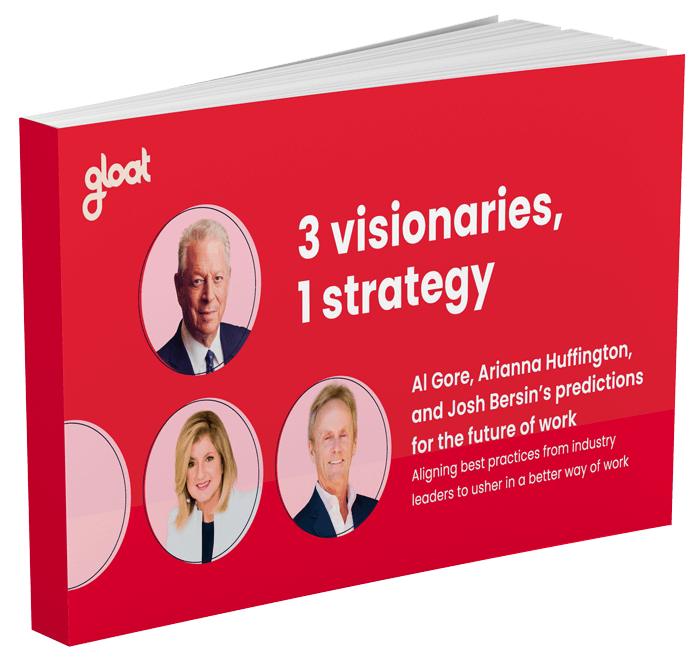Digital HR: what is it and how to implement it
Learn how to give your HR strategy a futuristic upgrade

Working in HR is no longer synonymous with overseeing administrative tasks and completing lots of paperwork. While that may have been the case for many individuals in the function several decades ago, HR’s role is rapidly evolving in our Post-Industrial era of work.
As technology advances and workforces become more dynamic, HR leaders can no longer rely on static tools and tried-and-true tactics to keep tabs on people’s skills and skill needs. Instead, savvy executives are turning to a new generation of digital solutions, with AI-powered platforms like an agile workforce operating system leading the way.
These solutions provide in-depth insight into workforce skills and emerging knowledge gaps, enabling HR leaders to begin architecting impactful transformation strategies. They’re also part of an overarching movement towards digital HR, a new chapter for the profession in which HR leaders collaborate with technology to develop operating models that will yield the best results for their businesses and the people who serve them.
What is digital HR?
Digital HR describes integrating innovative technologies into human resources processes to make them more effective, efficient, and connected. It’s the strategic combination of the HR department and technology that leads to streamlined operations, improved decision-making, enhanced employee experience, and a more agile and responsive organization.
The evolution of HR in the digital age
HR leaders’ roles are rapidly changing now that we’ve entered the Post-Industrial era of work. While HR teams in decades past oversaw primarily administrative responsibilities, today’s generation of leaders must be strategic by default. Modern HR executives are the architects of successful workforce transformation and as a result, find themselves at the helm of their organizations’ change journeys.
They are responsible for determining which skills their businesses have and the abilities they will need for the future as well as determining paths to bridge any emerging knowledge gaps. To execute these processes successfully, HR leaders need new digital tools to equip them with the real-time insights needed for better workforce planning and strategic decision-making.
Benefits of digital HR
Prioritizing digital HR and spearheading successful digital HR transformation strategies offers the following benefits:
#1. Improve efficiency and productivity
A core component of successful digital HR strategies is shifting to skills-based talent management strategies. When organizations embrace talent management approaches rooted in dynamic skills and underpinned by an AI-powered infrastructure, leaders can efficiently access the capabilities they need to get key projects across the finish line and empower employees to achieve their full potential.
#2. Streamlining HR processes
Digital systems can streamline HR processes so leaders can spend more time architecting winning strategies and less time completing mundane processes and paperwork. For example, rather than attempting to manually track all employees’ skills and constantly updating job architectures to reflect these new capabilities, skills intelligence systems like Gloat Skills Foundation update in real-time, in turn ensuring leaders always have the most up-to-date knowledge of their employees’ skill sets and emerging knowledge gaps.
#3. Enhancing employee experience
Workers want more from their employers than ever before and it falls on HR to ensure that those expectations are met while keeping business needs and priorities in check. Employees want to see their organizations stepping up and making a difference and they’re seeking opportunities to expand their professional horizons and hone new skills.
These tasks can only be achieved through a digital HR transformation strategy that encourages leaders to retire obsolete ways of working and empower all employees to explore new growth opportunities. Solutions like talent marketplaces fuel internal mobility by inspiring employees to seek out projects, gigs, and mentorships so they can build the skills needed to take their careers to the next level.
#4. Enabling data-driven decision-making
The world is becoming increasingly data-driven—and HR is no exception. Rather than making educated guesses about who to hire based on emerging skill needs, skills intelligence systems can showcase which capabilities are on the rise and on the decline as well as transferable skills that will make an employee a good candidate for a lateral transfer into a higher priority internal opportunity. Armed with these insights, HR teams can decide when it makes sense to hire externally and when they should seek out internal talent, based on the data their skills intelligence system presents them with.
4 best practices for impactful digital HR transformations
Given the many benefits associated with embracing digital HR, it’s easy to understand why so many leaders are embarking on transformation strategies related to these initiatives. If your organization is navigating a change journey to promote digital HR, consider the following best practices:
#1. Gain cross-leadership support
Digital HR transformation won’t just benefit the department; it will impact every business function, so it’s important to get leaders from across the organization on board. Include members of the C-suite from the start and encourage them to share their ideas and offer feedback throughout your journey. By listening and incorporating other leaders’ insights into your strategy, you can secure buy-in and ensure your approach aligns with everyone else’s priorities.
#2. Don’t overlook the cultural component
Getting buy-in from leadership is undoubtedly important. But if you want your digital HR transformation to be successful, you’ll also need to gain support from your employees. To help everyone get comfortable with the new role that HR will play at your company, take an employee-centric approach to planning.
Give your people the chance to ask questions, offer feedback, and share their concerns. Make sure to prioritize transparent communications throughout your transformation so that people feel included in your process and informed about what’s happening next.
#3. Ensure your strategy is rooted in your business goals
If you don’t go into your digital HR transformation with specific goals in mind, you’re setting yourself up for failure. Start by checking in with leaders from different departments to understand what their objectives are and the challenges that make their goals difficult to achieve. Then create two sets of objectives to guide your transformation: one for your department and another for the business at large. Include measurable success metrics that are developed based on your goals and a step-by-step guide throughout the transformation process.
#4. Choose the right technology
Technology isn’t the only part of digital HR transformation, but it’s certainly an important component that deserves a lot of thought. The right digital tools will bring your vision for HR transformation to life and can help maximize workforce productivity and engagement. Look for solutions that will automate and streamline processes, reduce time to hire, make onboarding more efficient, and move the needle on diversity and inclusion initiatives.
Rather than solely upgrading HR technology you already have, consider new categories like an agile workforce operating system, which includes both a talent marketplace and a skills intelligence system. The operating system harnesses ethically constructed AI to showcase all the skills within your organization and generate suggestions for projects, gigs, mentorships, and full-time roles that align with employees’ capabilities and interests.
How will AI redefine the future of digital HR?
While it’s impossible to predict exactly how AI will revolutionize HR in the years to come, leaders can feel confident that these systems will only continue to grow in popularity. Instead of replacing workers, AI will complement the tasks that employees are responsible for, paving the way for a future hallmarked by strategic collaborations between humans and machines.
For HR leaders specifically, emerging AI use cases hold a plethora of benefits. Many systems can expedite HR processes, such as sourcing tools that can build and screen applicants so that recruiters have more time in their days to focus on higher-level strategic priorities. In addition to leveling up efficiency, AI-powered platforms can help businesses embrace more equitable hiring and development processes. Talent marketplaces generate suggestions for projects and opportunities employees should pursue based solely on their skills and career goals, in turn removing potentially bias-inducing factors from the decision-making process.
If you’re looking for more tips to prepare for the future of work and understand the role that technology will play in it, learn what Josh Bersin, Al Gore, and Arianna Huffington predict about our new working era by checking out our guide, 3 visionaries, 1 strategy.





